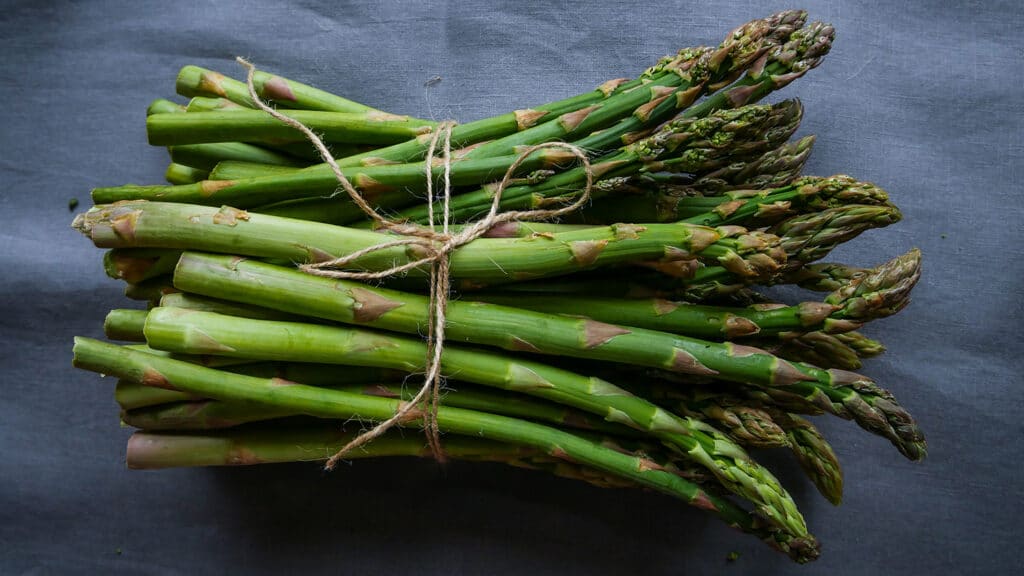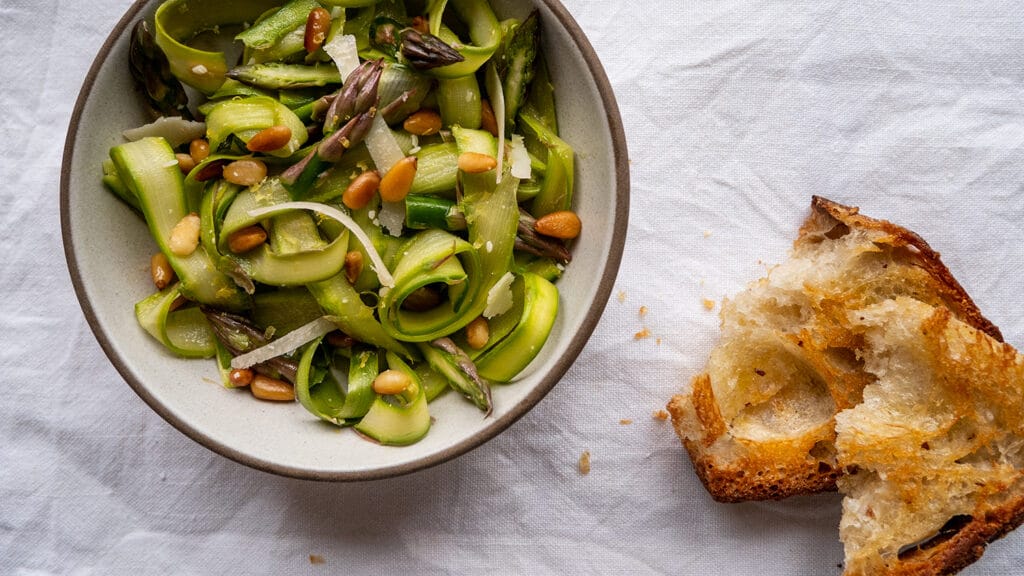Scoring points
Kathy Slack on the tricky art of growing asparagus


“GROWERS MUST EXERCISE SUPERHUMAN RESTRAINT AND STOP PICKING BY JULY TO SECURE NEXT YEAR’S HARVEST”
It’s a late May day in the 1980s. Two old ladies in tabard aprons sit, like wizened Italian nonnas, on plastic chairs in the lay-by of an Oxfordshire A-road. One holds a cash box in her lap, the other clutches a muddy turning knife. Behind them a sparse, sandy field is peppered with fronds of asparagus ferns, swaying nonchalantly in the breeze. Pull up here with your mother on the way home from school, and these gingham-clad keepers of the keys will waddle off into the field, joints creaking, and return with fistfuls of fresh, young asparagus for your supper.
This, for me, offered an early realisation of why some harvests are so prized and their season so fleeting. As a grown-up, encouraged by the memory of those halcyon days, I attempted to grow asparagus myself, but soon discovered that those old ladies were masters of a tricky art. Asparagus is technically possible to grow from seed, but most opt for planting dormant crowns, which must be left for two to three years before harvesting. It has to be picked by hand. And frequently – a spear can grow in less than a day. It needs plenty of space to grow, taking up acres of land, but hates weeds, so that expanse of bare soil must be weeded constantly, also by hand, asparagus roots being so shallow that a hoe would snap them.
And while the ferns will keep coming all summer, growers must exercise superhuman restraint and stop picking by July to allow the juvenile spears to grow into full ferns and secure next year’s harvest. As if all that wasn’t enough, they must then survive the winter without rotting in wet soil or being eaten by hungry wildlife keen to dig the dormant roots out of their shallow graves.
Unlike the growing, the eating of asparagus is best kept simple: steam and serve with butter or a soft-boiled egg. At most, wrap in prosciutto and roast for a few minutes. Or leave it raw, as in the recipe linked to below, to fully appreciate the juicy, crisp greenness of this hard-won harvest.
Asparagus, lemon & pine nut salad with garlic bruschetta
Read Kathy’s recipe, which brings to the fore the juicy, crisp greenness of English asparagus
